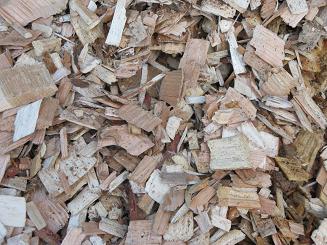Silvicultural Implications in Low-Value Species and Below-Grade Utilization
Many forest stands have a legacy of exploitation, leaving the forest depleted and high-graded. In particular, a large proportion of hardwood forests fall into this category (Koch, 1985; Hicks et al., 2004). Such forests usually have a high proportion of low-timber-value species and below-grade individuals that could be used for bioenergy as owners and forest managers attempt to improve the overall quality of the stand. Bioenergy markets can assist management as there are currently few roundwood markets for the material that is characterized by a range of species, tree sizes, and quality. Other possible markets for these low-value materials include fiber for pulp or composite products and firewood.
If the management objectives are to rehabilitate the forest, removing low-quality trees is often a necessary first step. In doing so, care must be taken not to remove or damage residual trees or to negatively impact the long-term productivity of the site. The three silvicultural treatments most used for forest rehabilitation are cleaning, improvement cutting, and liberation cutting.
-
- The term cleaning is used in mixed-species stands where overtopping trees are removed during the sapling stage to favor more desirable species of a similar age (Smith et al., 1997; Hicks, 1998; Hicks et al., 2004).
-
- Improvement cutting is used in mixed-species stands past the sapling stage where trees of undesirable species or form are removed from the main canopy to favor the more desirable species or individuals. Like thinning, the objective of improvement cutting is to direct growth potential to more desirable species and individuals and can sometimes provide merchantable volumes of sawtimber trees as well as lower value products.
-
- Liberation cutting is undertaken in older stands that have often been subject to high grading or are overcut and where poor-quality and normally unmerchantable trees are scattered throughout the stand. With liberation cutting, these undesirable trees are removed to promote the growth of the remaining trees.
In all of these situations, it may be possible to use some of these trees as a bioenergy source. The feasibility of doing so will vary with site characteristics, availability of suitable machinery such as small-scale woody biomass harvesting systems, and the economics of the operation.
Salvage cutting can be used when damage to the stand from natural disturbances has occurred (Smith et al., 1997) and the primary purpose is to remove trees that have died or are expected to die. Biomass harvesting can be combined with timber recovery. Because wood quality deteriorates in as few as three to four months for even framing uses, wood use as bioenergy may be one of the few productive options available because wood quality is less critical for bioenergy use.
